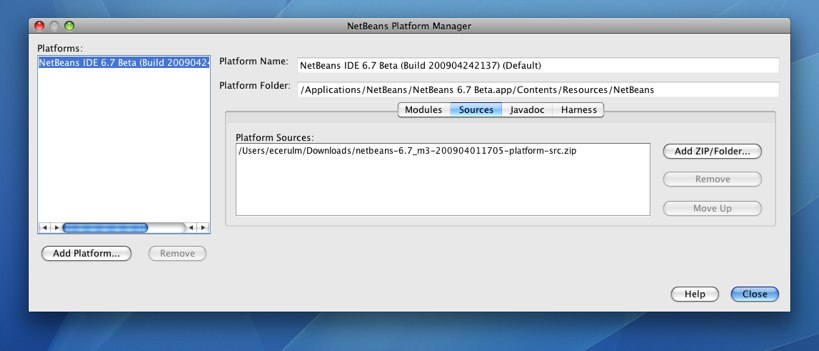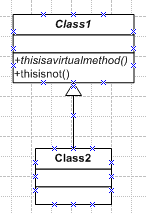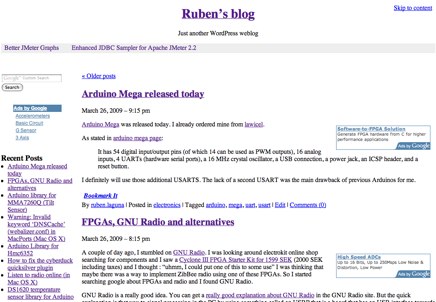If you’re getting a NullPointerException stacktrace like the one below while using the Netbeans Visual Library to create your own GraphScene, check that your adding your widgets propertly to scene. A good idea is to use LayerWidgets, declaring them in the constructor of your GraphScene:
mainLayer = new LayerWidget(this);
addChild(mainLayer);
connectionLayer = new LayerWidget(this);
addChild(connectionLayer);
and then add the widgets to those layers in attachNodeWidget and attachEdgeWidget:
@Override
protected Widget attachNodeWidget(String node) {
LabelWidget w = new LabelWidget(this, node);
w.setBorder(BORDER4);
w.getActions().addAction(createSelectAction());
w.getActions().addAction(createObjectHoverAction());
w.getActions().addAction(ActionFactory.createMoveAction());
this.mainLayer.addChild(w);
return w;
}
@Override
protected Widget attachEdgeWidget(String edge) {
ConnectionWidget w = new ConnectionWidget(this);
w.setTargetAnchorShape(AnchorShape.TRIANGLE_FILLED);
this.connectionLayer.addChild(w);
return w;
}
The stacktrace:
To be able to do Navigate ⇒ Go to Source on netbeans classes like TopComponent you need to link the sources to the Netbeans Plaform using the Netbeans Plaform Manager as explained in Hyperlinking to NetBeans API Sources.

Be sure to download the proper source zip from the netbeans download page, otherwise the Platform Manager won’t let you attach the source file to the platform (all invalid options are greyed out/dimmed):
After learning about the Favorites window in the NetBeans Platform Quick Start. I wanted to use it in an application of my own.

This easy task became more difficult that I though because I was getting random results, sometimes after a clean build I got the Favorites window open and sometimes not.
But let’s start from the beginning, I put my hands at work, it was just a matter of adding the Favorites module to the Netbeans Platform Application (app’s properties ⇒ Libraries ⇒ Platform Modules ⇒ platform9 ⇒ Favorites) and edit one of my modules layer.xml to override Windows2/Modes/explorer/favorites.wstcref. Just go to Important Files ⇒ XML Layer ⇒ this layer in context ⇒ Windows2 ⇒ Modes ⇒ explore ⇒ favorites.wstcref and replace
I got the MAX756 that I was waiting for from Futurlec. The idea was to implement the very same circuit that comes in the MAX756 datasheet. In my first try I got very strange results which I posted to ladyada forum hoping to get some advice on how to solve. Eventually I set up the circuit in another breadboard and got it working the way I expected or at least I thought so.
Amazing how difficult is to get C** virtual methods in Visio .

I’m looking at how to do a USRP clone. After evaluating a little bit the Altera Cyclone FPGA development/starter kits I realized that I would need an extra USB controller like the original USRP has. Right now, I’m trying to figure out how to use the Cypress FX2 CY7C68013, together with the FPGA. The USRP FAQ on FX2 CY7C68013 has proven quite helpful, also the Design of a hardware platform for narrow-band Software Defined Radio applications" by Kalen Watermeyer .
I think it was about time to change theme. I opted for Sandbox, I like the clean look. I was surprised on how well the change theme procedure was, just switch theme and the sidebar (with all the widgets) it’s still there.

Arduino Mega was released today. I already ordered mine from lawicel.
As stated in arduino mega page:
It has 54 digital input/output pins (of which 14 can be used as PWM outputs), 16 analog inputs, 4 UARTs (hardware serial ports), a 16 MHz crystal oscillator, a USB connection, a power jack, an ICSP header, and a reset button.
I definitely will use those additional USARTS. The lack of a second USART was the main drawback of previous Arduinos for me.
A couple of day ago, I stumbled on GNU Radio. I was looking around electrokit online shop searching for components and I saw a Cyclone III FPGA Starter Kit for 1599 SEK (2000 SEK including taxes) and I thought : “uhmm, I could put one of this to some use” I was thinking that maybe there was a way to implement ZibBee radio using one of these FPGAs. So I started searching google about FPGAs and radio and I found GNU Radio.
In the past days I published a couple of arduino libraries. All coming from by XBee sensor development. I’m still waiting for the MAX756 to arrive from Futurlec, I need the MAX756 to power the xbee sensor with batteries and mount it in its final position. So in the meanwhile I’m cleaning a little bit the code, moving thing to libraries, etc. Now it’s the turn of the MMA7260Q, (see other posts about MMA7260q) .
I created an Arduino library to use MMA7260Q as a Tilt Sensor that does autozero calibration.



